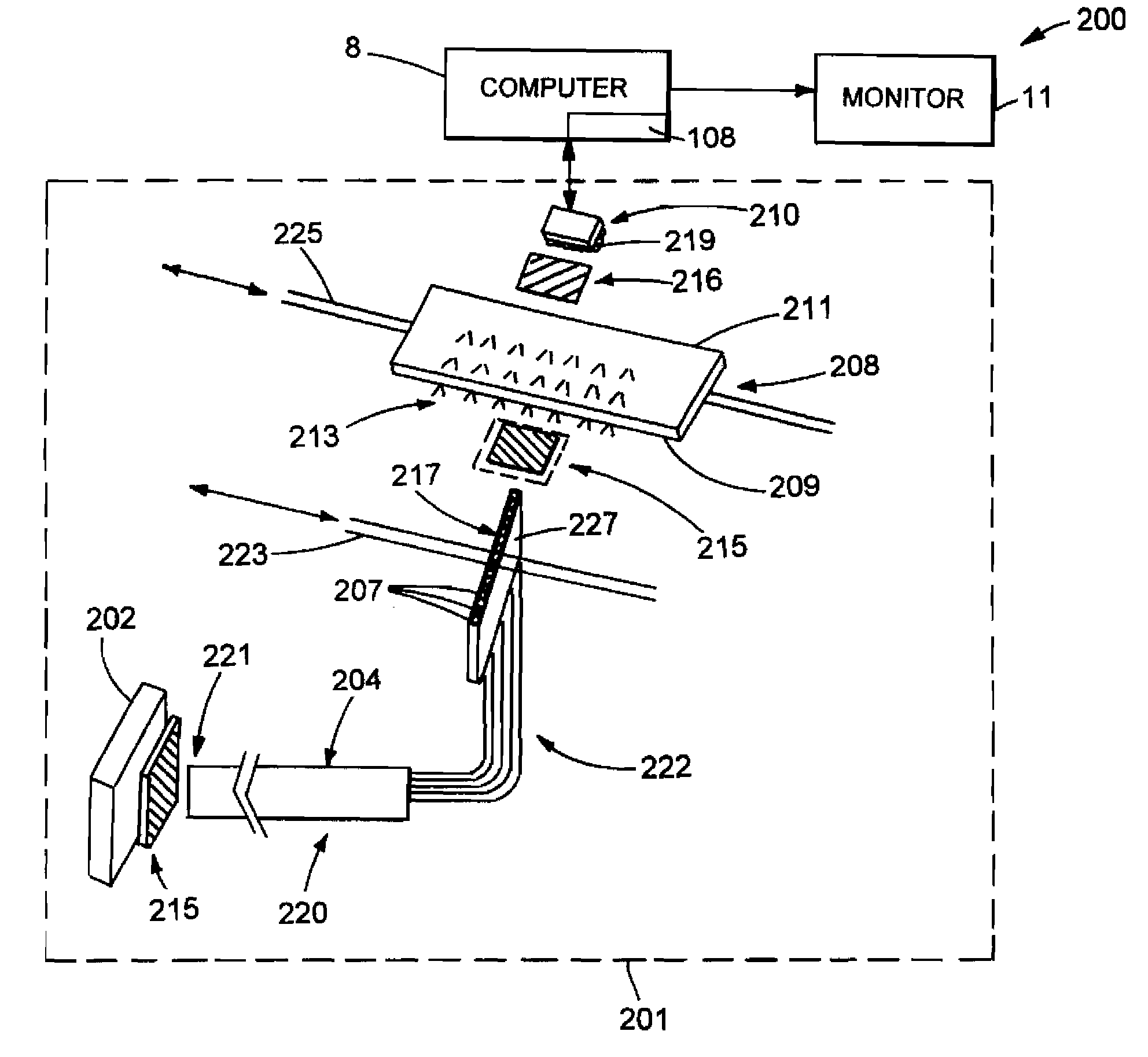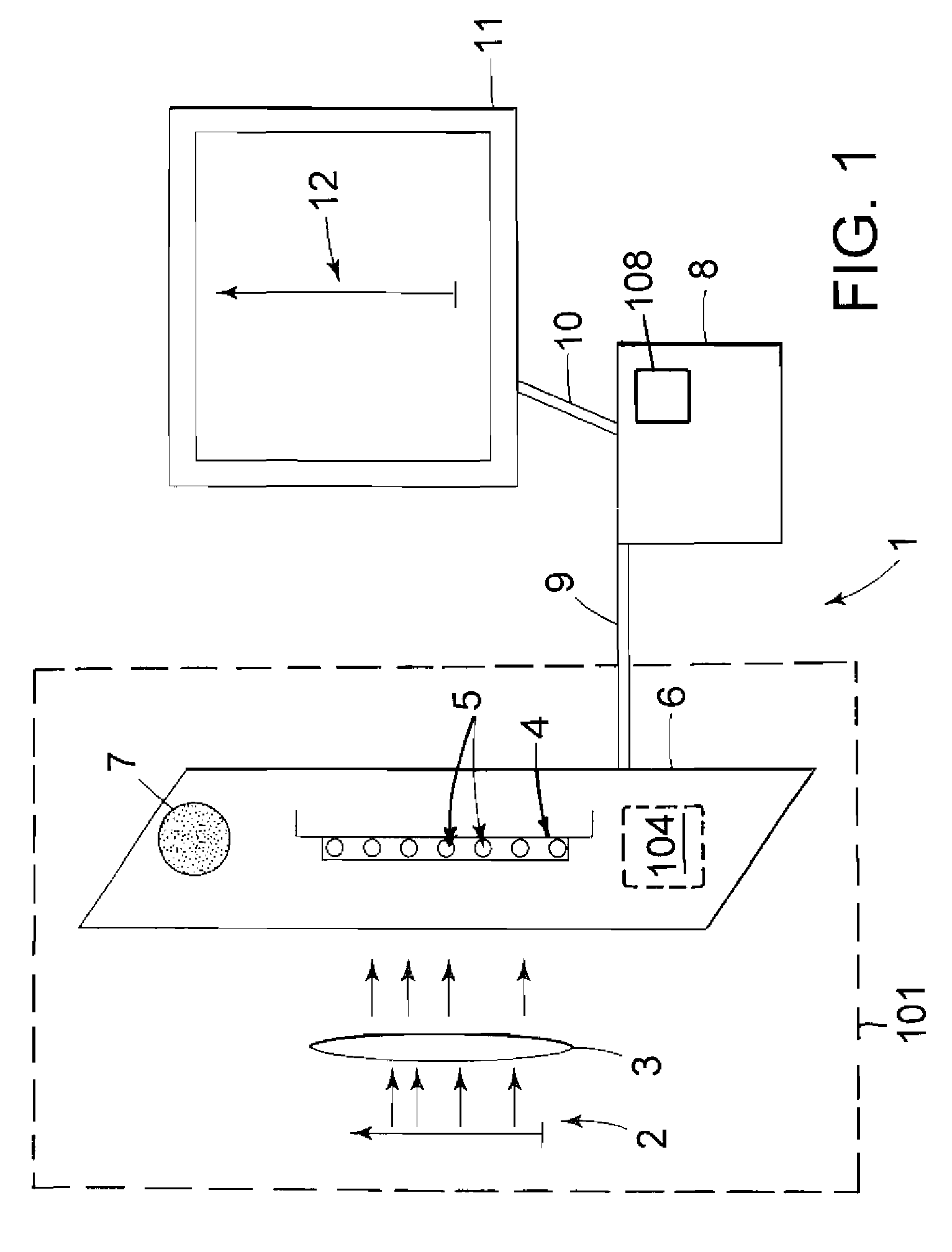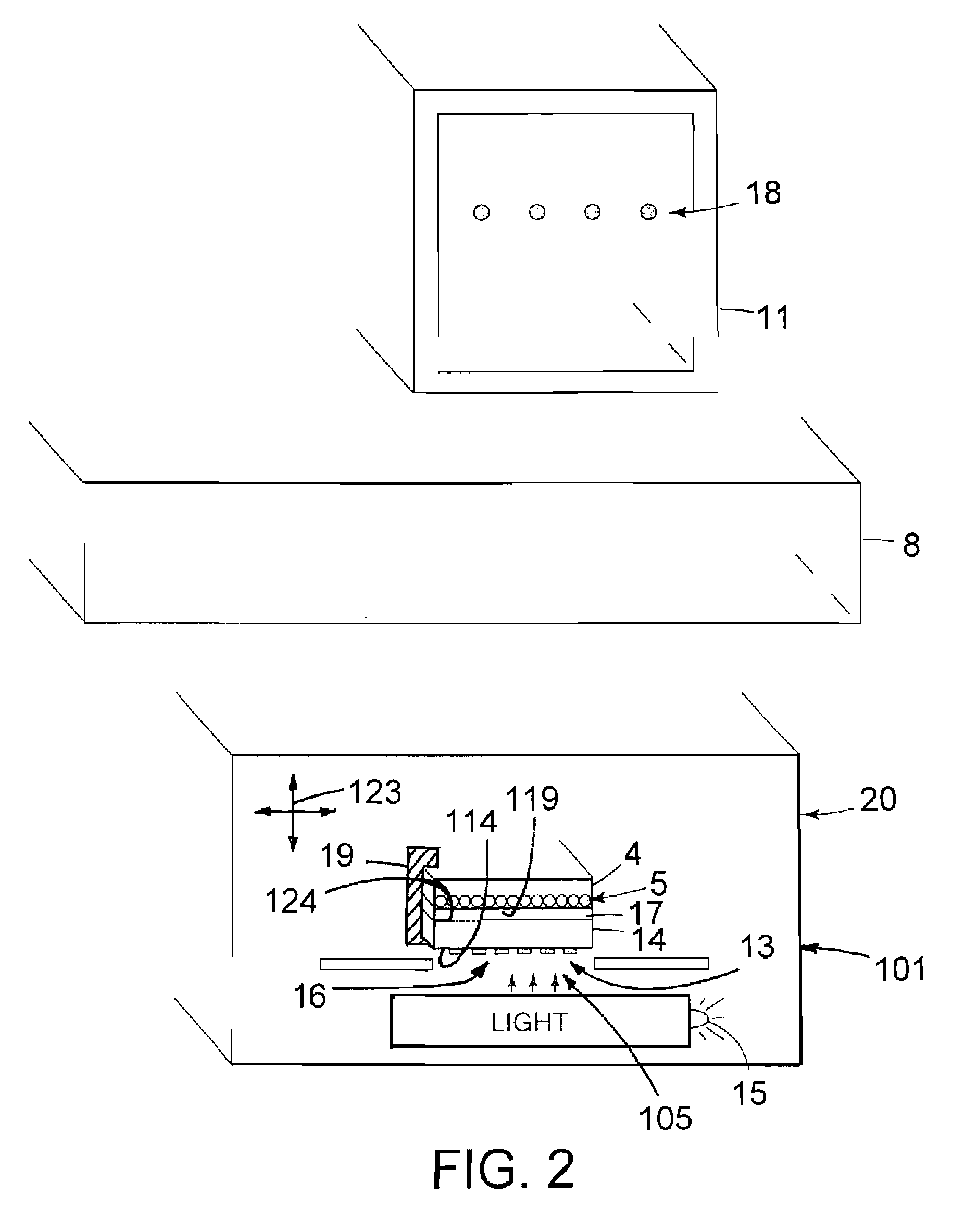Imaging of Biological Samples
a biological sample and imaging technology, applied in the field of imaging systems and methods, can solve the problems of preventing the broad use of such technologies, requiring training and maintenance, and requiring sophisticated and expensive instruments such as conventional microscopes
- Summary
- Abstract
- Description
- Claims
- Application Information
AI Technical Summary
Benefits of technology
Problems solved by technology
Method used
Image
Examples
Embodiment Construction
[0045] The present invention provides inexpensive devices and methods for resolving light (e.g., emitted light by fluorescent labeled nucleic acid spots) representative of biological samples (e.g., nucleic acid spots on a micro-array such as a DNA chip, protein bands of a 1-D or 2-D gel, etc.) for the detection thereof. As used herein, biological samples refers to biological material (proteins, nucleic acids, tissues, etc.) associated with a biological material holding structure (e.g., a micro-array substrate such as a DNA chip substrate a gel, etc.) in a manner that allows for detection of the biological material, or portions thereof (e.g., with the use of markers such as dyes, tags, labels, or stains), such as through the use of imaging (e.g., direct mapping).
[0046] The term, “biological samples” refers not only to the biological material itself (proteins, nucleic acids, tissues, etc.) but also to other materials associated therewith used for detection of the biological material,...
PUM
| Property | Measurement | Unit |
|---|---|---|
| diameters | aaaaa | aaaaa |
| diameters | aaaaa | aaaaa |
| length | aaaaa | aaaaa |
Abstract
Description
Claims
Application Information
 Login to View More
Login to View More - R&D
- Intellectual Property
- Life Sciences
- Materials
- Tech Scout
- Unparalleled Data Quality
- Higher Quality Content
- 60% Fewer Hallucinations
Browse by: Latest US Patents, China's latest patents, Technical Efficacy Thesaurus, Application Domain, Technology Topic, Popular Technical Reports.
© 2025 PatSnap. All rights reserved.Legal|Privacy policy|Modern Slavery Act Transparency Statement|Sitemap|About US| Contact US: help@patsnap.com



